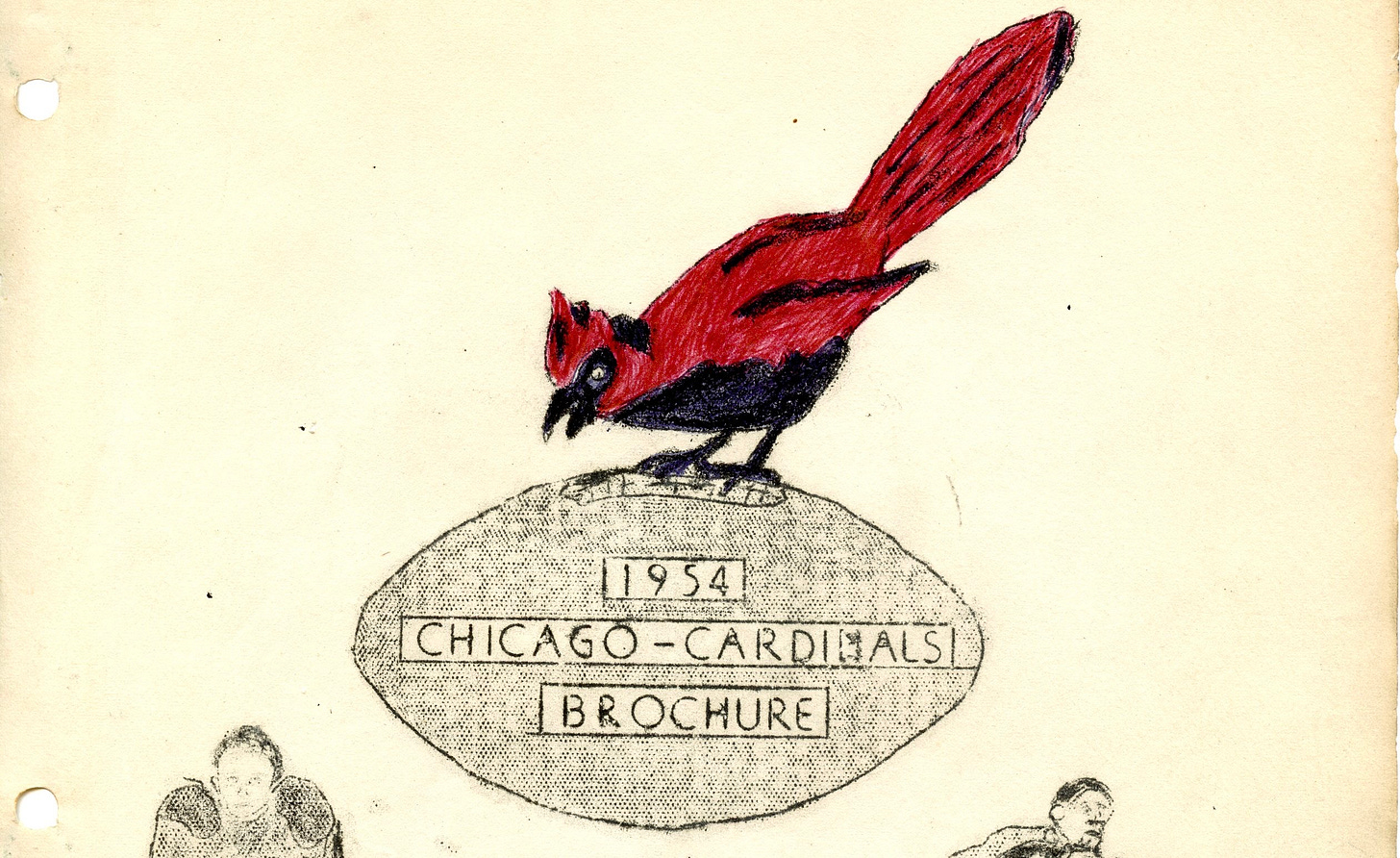Today's Tidbit... O Line Blocking and the 1954 Chicago Cardinals Playbook

Early football offenses using the mass and momentum approach opened holes by crashing multiple backside linemen and running backs through the hole. Rule changes intended to eliminate mass and momentum plays required seven players on the line of scrimmage and required offenses to gain ten rather than five in three plays. (Teams had to gain ten yards in four plays starting in 1912.)
Those and other changes required offenses to find new ways to move the ball and forced changes in blocking schemes. For example, when Pop Warner introduced his Carlisle Formation (aka Single Wing offense), he often had one lineman '“assist“ another when blocking a defender but did not assign a name to that tactic. The tactic was called two-on-one blocking by the late 1920s. Some called it one-two blocking in the mid-1930s, while double-team blocking entered the vocabulary by 1940, though the old terms remained in use after the new names arrived.
For example, the image below is page 15 from the 1954 Chicago Cardinals playbook, which defines three 2-on-1 blocks that differ based on the positions involved:
Pinch: Tackle and End
Squeeze: Guard and Tackle
Vise: Center and Guard
The playbook does not clarify whether these blocks were embedded in specific play designs, called in the huddle, at the line, or a combination. However, it and other playbook elements show that NFL football was schematically simpler than today, at a time when this NFL playbook focused on 5- and 6-man fronts rather than the 4-man fronts that became popular later in the decade.
Likewise, the playbook shows five pass-blocking schemes, with four based on man-blocking principles. Man principles assigned offensive linemen and backs to specific defensive players, typically the man aligned over or just outside of them, and were responsible for that defender wherever he went. Uncovered linemen dropped back to assist teammates that got in trouble.
Although cup protection had been around since at least the mid-1940s, the Cardinals used it only against "unorthodox" defenses. Presumably, that meant unusual defensive formations or those that stunted and "red dogged" frequently. ("Stunt" was new to football's vocabulary in the early 1950s, and "red dogging" became known as blitzing a few years later.)
While both the run and pass blocking concepts were simple compared to today, the rules of the 1950s did not allow offensive linemen to extend their arms when blocking. As a result, it took an exceptional athlete and technician to block under those limitations, which explains why coaching books of the era devote far more pages to individual techniques than schemes.
Note: This playbook and a similar one for the 1954 Cleveland Browns are the earliest preprinted playbooks I’ve encountered. Earlier teams often had players prepare their own playbooks based on chalk talk sessions. If you are aware of earlier playbooks, please comment below.
Football Archaeology is reader-supported. Click here to buy one of my books or otherwise support the site.



